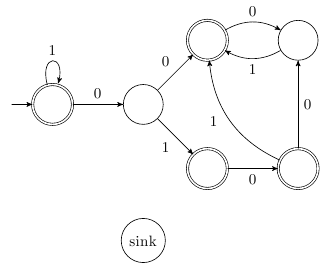- #1
evinda
Gold Member
MHB
- 3,836
- 0
Hello!
I have to draw the DFA of the language of the following expressions:
a){[tex]1^*\{00,010,\varnothing\}(01)^{*}[/tex]}
b)[tex](\{\{1,0\}^{*},(\varnothing,2)^*\})^{*}[/tex]
Could you help me to find the languages that are meant,so I can draw the DFAs?
I have to draw the DFA of the language of the following expressions:
a){[tex]1^*\{00,010,\varnothing\}(01)^{*}[/tex]}
b)[tex](\{\{1,0\}^{*},(\varnothing,2)^*\})^{*}[/tex]
Could you help me to find the languages that are meant,so I can draw the DFAs?



